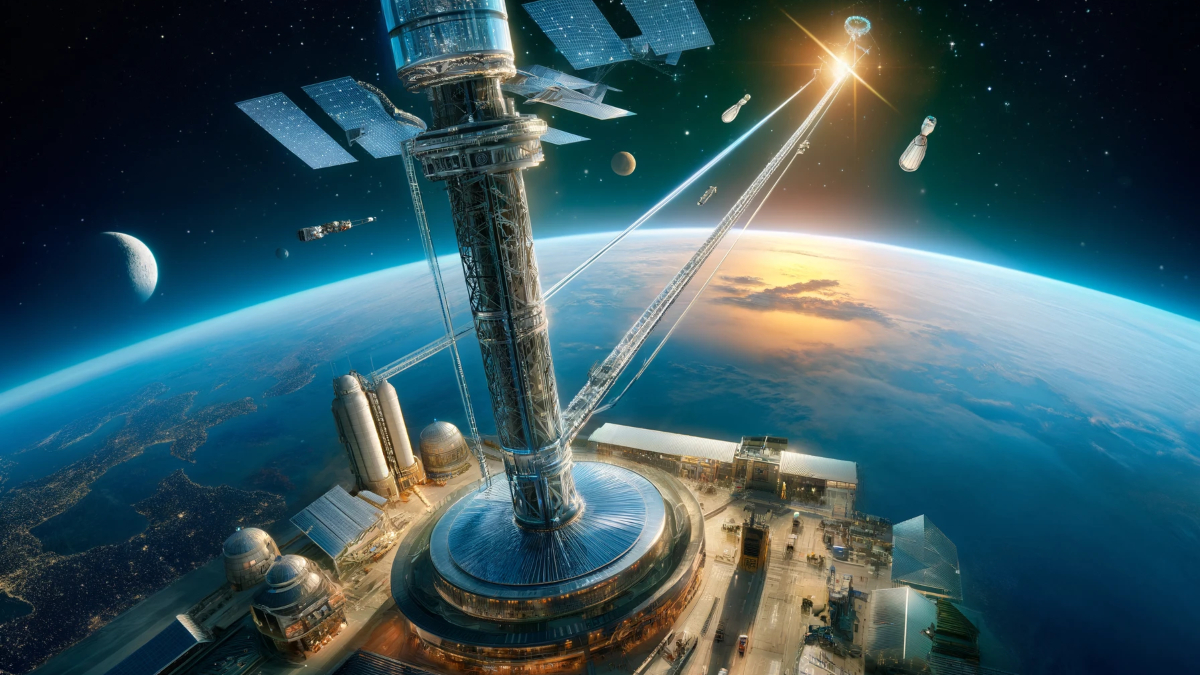In an ambitious move to make space travel more accessible, Obayashi Corporation, the company behind Tokyo Skytree, plans to construct a space elevator by 2025. This innovative project aims to lower the cost of space travel significantly, potentially changing the future of interstellar exploration.
The concept of a space elevator, once considered a far-fetched idea, is gaining traction among experts. It would operate similarly to a conventional elevator, utilizing tethers, a platform, a ballast, and a counterweight.
According to the educational website Explain That Stuff, a traditional elevator works by using a counterweight that pulls up the platform as it descends. A motor regulates the counterweight’s force to ensure a smooth ascent and descent, also providing emergency brakes when necessary.
The Obayashi Corporation’s space elevator would start from an Earth Port located 10 km offshore, featuring a ballast to anchor the cable and adjust its tension. This port would facilitate the transportation of people and cargo, ultimately contributing to the construction of a Geostationary Orbit Station 36,000 km above Earth. This station would not only generate solar power for Earth but also serve as a hub for visitors to experience zero gravity.
A counterweight located 96,000 km from Earth would extend towards Jupiter and nearby asteroids. This component is designed to help spacecraft extract resources from other parts of the solar system.
A significant advantage of the space elevator is its potential to eliminate the need for massive amounts of rocket fuel. Instead, it would use electromagnetic vehicles, or climbers, powered by solar energy or microwaves. This innovation could drastically reduce the cost of space travel, with estimates suggesting a drop from SpaceX’s Falcon 9 cost of $1,227 per pound to just $57 per pound, according to Obayashi’s Business Development Manager Yoji Ishikawa.
However, challenges remain. Christian Johnson, who authored a report on space elevators for the Journal of Science Policy & Governance, pointed out the difficulty of building the structure with current materials. “If you try to build it out of steel, you would need more steel than exists on Earth,” Johnson noted. Ishikawa suggested the use of carbon nanotubes, which are lighter and stronger than steel, though the longest nanotube produced so far is only two feet long.
Additionally, Johnson raised concerns about potential damage from extreme weather conditions and the need for multiple trips to achieve a return on investment.






